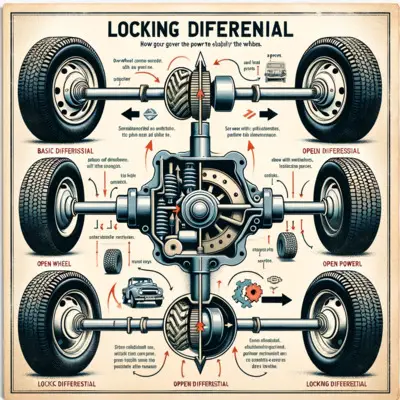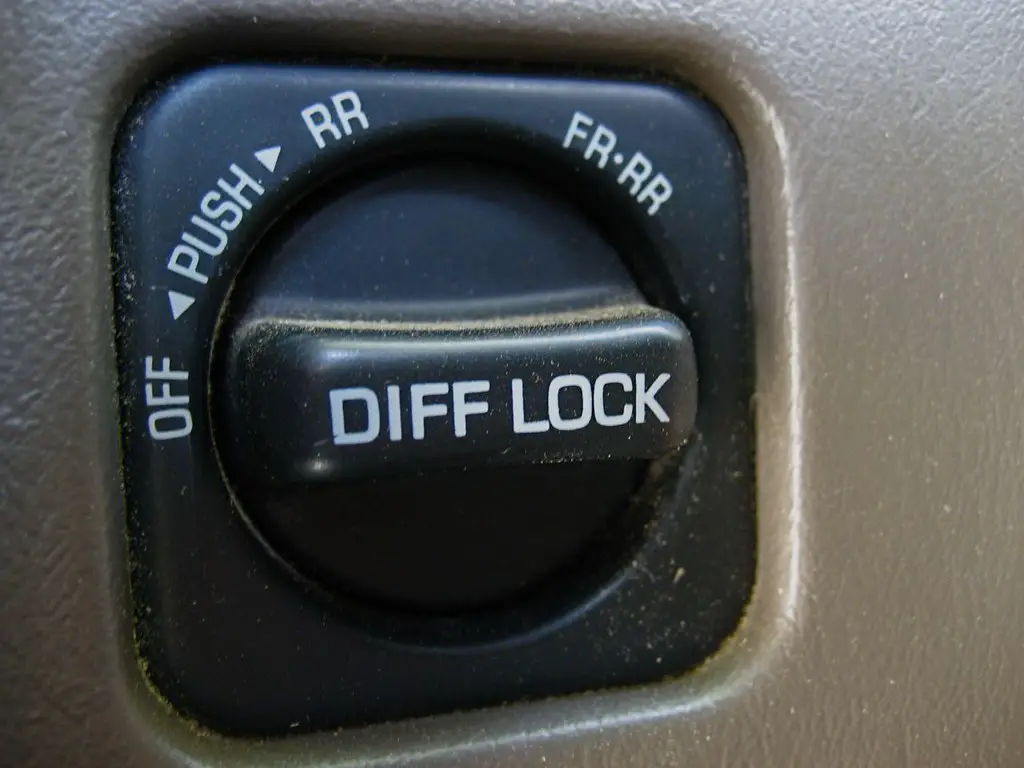With the unbound craze of off-road driving, the demand for locking differentials is on the rise. However, not all people have enough knowledge about how to use diff lock properly.
A significant portion of drivers is also hesitant about when to use diff lock. The locking differential is the most reliable component in the toughest situations. However, without proper knowledge and using procedures, you may end up with nothing but frustration.
That is why we have come up to guide you about those basic factors that you should learn before using a differential lock on your vehicle. So, let’s start.
Understanding The Fundamental – How Does A Locking Differential Work?

A diff-lock is an abbreviated term for a lockable differential, and they are also named lockers. There are different forms of diff-locks, but before we get into why you want to lock your differential, we need to explain what a differential is, and it starts with the fact that it gets rid of a momentariness.
Suppose you’ve got two wheels on an axle. If either of those wheels turns a corner, the later wheel takes a shorter path than the earlier one. Nevertheless, both wheels take the same amount of time to complete the turn. This is one circumstance that will be fine if the wheels rotate freely on the end of an axle, but it can become a problem when engaging the motor to turn.
We could simply bolt on some sprockets and mount a driveshaft onto it, but that would mean both wheels have to spin at the same time. When we try to turn, the inside wheel will speed up, skid, and jump as it is forced to rotate at a higher speed than its wheel is capable of.
This stress on the axle, tire wear, bad handling, and the tendency to understeer can result in the nose of your car swinging out when you make sharp corners. What’s needed is a way to drive both wheels, allowing them to turn around a curve at differing speeds.
There is a solution, and it’s called the differential locker, or diff lock for short. It is an intricately complex system of gears that permits the inner wheel to turn more slowly than the outer, yet both are able to turn. No particular breakdown of the method by which the gears work is necessary to understand how they operate.
Why Do You Need A Locking Differential?
If there’s too much resistance when re-driving on an uneven or slippery surface, the diff lock becomes crucial. When there is an open differential by a wheel resting lightly or riding on soft sand, it will start spinning more and more as the wheel encounters the least resistance.
Using a different lock lets you select both driven wheels to rotate at the same speed, with the potential to tug or pull more energy as you drive steadily. Proceeding in a straight line provides the right progression, so you can gradually move forward and gradually exit your parking spot.
When To Use Diff Lock
Do not fall prey to the disparity Believe that whenever you face a crisis, you engage the diff lock and everything is so much better. Some things are not worked through all at once, and you will have to break rules on more than one occasion over your lifetime, but here are some generalized tips.
Extreme Flex
It is believed to be probably the most common circumstance in which a 4WD will find itself with the assistance of a diff lock. In such a scenario, the grappling of the car is extended to its utmost.
In fact, when the rear left wheel goes up a hill with a farther climb on the front right wheel, the rear right wheel starts to rise and strong-arms it with the left. As a result, the front wheels and back wheels both lose traction and lift off the ground.
With no power being directed away from the wheels on the ground and into the wheels pushing it even higher, the friction between the wheels and the friction and forces between higher ones required more force to be exerted to lift them.
As a result, more force was used to overcome inertia and destroy energy in the vehicle, which has an environmental and potential danger.
Uneven Vehicle Traction
Another situation in which you may find a diff locker to be useful is if you start a car on a smooth track on one side and swivel out onto an uneven surface on the other. For example, if the car is driving on a smooth road, but it begins to rain on the other side of the car, you might have difficulty shifting from your smooth side of the road to the non-smooth (but probably safer) side.
Crossing the dry side will have greater traction than the wet muddy side. On each side of the vehicle, the tires with the greatest traction will control power, which will find their way to the wheels connected to the muddy rut. The result is that the wheel spins and your vehicle becomes stuck.
Other Situations:
Here are some other common situations when you can engage your locking differential:
- Where one wheel is either in the air or does not grip as necessary, downwards negotiating a rutted road is a common scenario.
- As you’re moving in the first range of a couple of inches or the second, you have a good quantity of rear-wheel traction, while the others are mildly sloped, so you do not need to turn as much as you can.
When You Shouldn’t Use A Locking Differential
As we mentioned in the previous section, having a locking differential on your vehicle doesn’t necessarily mean you have to engage in all circumstances. Here are some scenarios when you should avoid engaging your diff lock:
- You need to turn precisely, such as when you’re negotiating a demanding turn. Using your vehicle’s locks can make it even more difficult to corner and can be hazardous to the vehicle.
- When all four wheels on a vehicle have equal heavy masses and are in firm contact with the ground. This is because they all generate equal amounts of friction.
- The differential lock in your vehicle is not suitable for high-speed driving. Using the locking differential abnormally could damage your car.
- Avoid engaging the diff lock while the linear acceleration is occurring on side slopes because it will cause the automobile to laterally move since the differential isn’t permitting wheels from any part to pivot across a shaft.
How To Use Diff Lock Properly
If you’ve ever had to change a tire on your car, then you know that a locking differential is an important tool. Locking differentials help to prevent your car from spinning out while you’re changing the tire, and they can also help to improve your driving experience by giving you more traction in snowy or icy conditions.
There are 2 categories of diff-lock, which are automated and manual. These are exactly what they sound like, with automatic diff-locks kicking in if it senses a loss of traction on a wheel. Once traction is restored, this feature will disengage automatically. A manual diff-lock, on the other hand, gives you control over the system.
You just need to press a button when you want time to take it, and tap your finger once again while you’ve got the wheels off the ground or to the ground. If you’re driving on difficult terrain or over rough terrain, you only need to use this button about two or three times.
Similar to what we’ve discussed previously, you should strictly use the differential-lock function in difficult or unsettled areas (e.g. sand, mud, gravel, snow) given the traction that you must manage to move forward slowly. Once stable, you should disengage the differential-lock feature, if it’s manual.
Here are some tips to help you get the most out of your locking differential:
- Make sure that your tire size is compatible with the locking differential. Not all differentials are designed to be used with all tire sizes.
- Check the gear ratios and match them up to your driving needs. A too-high gear ratio will make the vehicle harder to drive and a too-low gear ratio can cause excessive wheel slippage and loss of traction.
- Pay attention to how much torque is being applied at each wheel during cornering and braking, as this will affect how easily the locker can lock or unlock.
- Avoid accelerating or braking suddenly while the locker is in operation – this could cause it to slip or lock prematurely.
Should I use diff lock on the sand?
An engaged differential lock will keep you safe on off-road terrain while making sure that progress is still maintained. However, in soft soil, engaging this differential lock may suggest you have trouble going forward and getting stuck, or that a high-power setting could increase your likelihood of this.
Final Words
It is important to consider when to use a diff lock and its purpose. The most common application for a locking differential is in off-road vehicles, where it can be used to increase traction and stability when traversing difficult terrain. Locking differentials are also commonly used in rally cars and street cars to enhance cornering performance.
